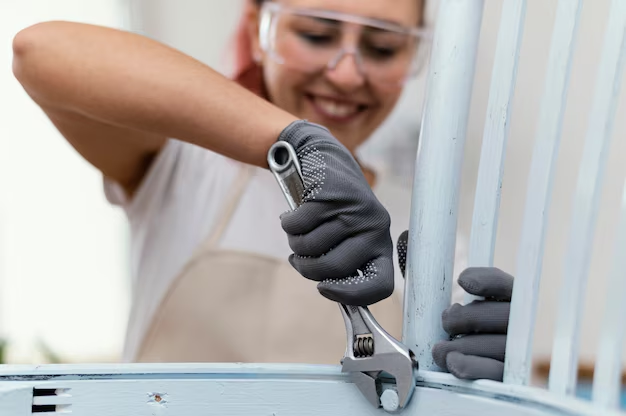Why Your Freezer Works, but Your Refrigerator Doesn't: Unraveling the Mystery
You open your refrigerator, reaching for the milk you just bought, only to find it's warmer than expected. Meanwhile, your freezer continues to make perfect ice cubes. It’s a perplexing situation many have encountered. Why does the freezer seem fine, but the refrigerator doesn't cooperate? Understanding this issue requires insight into the mechanics of how these appliances function, potential reasons for dysfunction, and practical solutions. Here’s a deep dive into the mystery of mismatched temperature controls between your freezer and refrigerator.
Understanding How Refrigerators and Freezers Work
To grasp why one part of your appliance is chilling perfectly while the other isn’t, it’s essential to understand the basic mechanics shared by refrigerators and freezers:
How They Operate
- Shared Cooling System: Most refrigerators and freezers operate using a single cooling system. The compressor pumps refrigerant through coils, absorbing heat from inside the appliance and releasing it outside. The evaporator fan distributes this cool air within the fridge and freezer sections.
- Thermostatic Controls: Sensors monitor the temperature and adjust the system's operation to maintain the desired environment. Generally, cold air flows from the freezer compartment to the fridge.
The Balance Act
The critical balance in maintaining consistent temperatures throughout the appliance lies in the airflow between the freezer and the refrigerator.
- Dampers and Ventilation: Dampers and fans manage airflow, usually sending more cold air to the freezer. Without proper ventilation, the refrigerator section may not receive adequate cooling.
Common Reasons Your Freezer Works, but Your Refrigerator Doesn’t
There are several typical culprits behind this frustrating scenario:
Blocked Vents
- Improper Air Circulation: If items are blocking the vent between the freezer and refrigerator, cold air doesn’t circulate properly.
- Solution: Rearrange items to ensure vents aren’t obstructed, allowing for smooth airflow.
Evaporator Coil Issues
- Frost Build-Up: Ice accumulation on the evaporator coils can hinder their function, reducing cooling efficiency.
- Defrosting Mechanism Failure: An automatic defrost system might not work due to a faulty timer, heater, or thermostat.
- Solution: Manually defrost the freezer and inspect the defrost system if problems persist.
Malfunctioning Fans
- Evaporator Fan: This fan is crucial for moving air from the freezer into the refrigerator. If it fails, cooling efficiency drops.
- Condenser Fan: Located near the compressor, this fan releases heat from the refrigerant. Its malfunction can also affect the cooling cycle.
- Solution: Listen for fan operation and have faulty ones replaced if necessary.
Thermostat and Thermistor Issues
- Faulty Thermostat: If the thermostat fails, it can miscommunicate the actual temperature, leading to a warmer fridge.
- Thermistor Problems: This sensor sends temperature readings to the control board. A malfunction can cause inconsistency.
- Solution: Testing and replacing components can solve these issues.
Troubleshooting Steps
For those comfortable with a bit of detective work, here are practical troubleshooting steps:
Visual Inspection
Check for:
- Visible Ice Build-Up: Look for frost in the freezer or around evaporator coils.
- Obstruction in Vents: Clear any blocked airflow passages.
Listen for Unusual Noises
- Silent Fans: A freezer that isn't humming may signal a faulty fan.
- Compressor Activity: Ensure it cycles on and off properly.
Check Temperature Settings
- Thermostat Calibration: Ensure settings haven’t been inadvertently changed. Adjust and observe changes over 24 hours.
Defrost the System
Manually defrost to see if performance improves, particularly if frost was evident during inspection.
Professional Diagnosis
If the issue persists after basic troubleshooting, seeking professional expertise ensures a thorough diagnosis and appropriate repairs.
Preventive Measures for Long-Term Appliance Health
Avoiding this situation in the future can save both time and stress:
Regular Maintenance
- Clean Coils and Fans: Dust and debris can affect mechanics, so regular cleaning prolongs lifespan and efficiency.
- Monitor Temperature: Use a separate thermometer inside to ensure accurate settings.
Proper Organization
- Balanced Load: Don’t overcrowd shelves, preventing adequate air circulation.
- Avoid Blocking Vents: Careful placement of items ensures airflow isn’t obstructed.
Signs You May Need a New Appliance
Sometimes, despite best efforts, continued dysfunction suggests it’s time for a new refrigerator:
Frequent Repairs
If repairs are becoming routine, replacement may be more cost-effective.
Aging Appliance
As appliances age, their efficiency diminishes. Newer models offer better energy efficiency and advanced features, resulting in long-term savings.
📝 Quick Tips for Keeping Your Devices Running Smoothly
- ❄️ Keep Vents Clear: Allow air to flow freely between compartments.
- 🔧 Listen for Unusual Sounds: Regularly check for silent fans or unwelcome noise.
- 📅 Schedule Maintenance: Have a professional inspect your system annually.
- 🧊 Control Frost Build-Up: Ensure the defrost system operates correctly.
Bringing It All Together
The split between a functional freezer and a non-cooperative refrigerator can be mystifying, yet it’s often explained by a few common issues. By understanding the inner workings and taking a systematic approach to troubleshooting, most users can pinpoint the problem. Regular maintenance and smart appliance management will likely prevent these issues from occurring again. Understanding the interaction of these parts not only helps with immediate troubleshooting but supports long-term appliance health and efficiency. While some problems might call for professional assistance, many issues can be resolved with a bit of investigation and care. Keep your refrigerator and freezer operating smoothly with these insightful tips, ensuring your kitchen always stays cool and ready for use.
